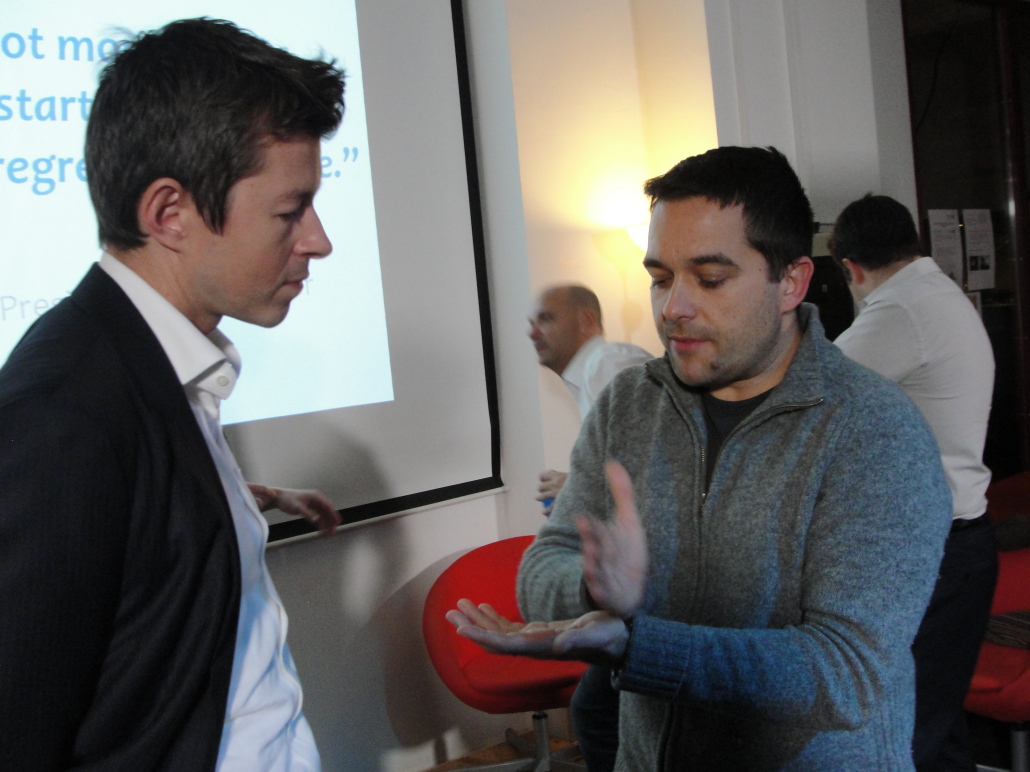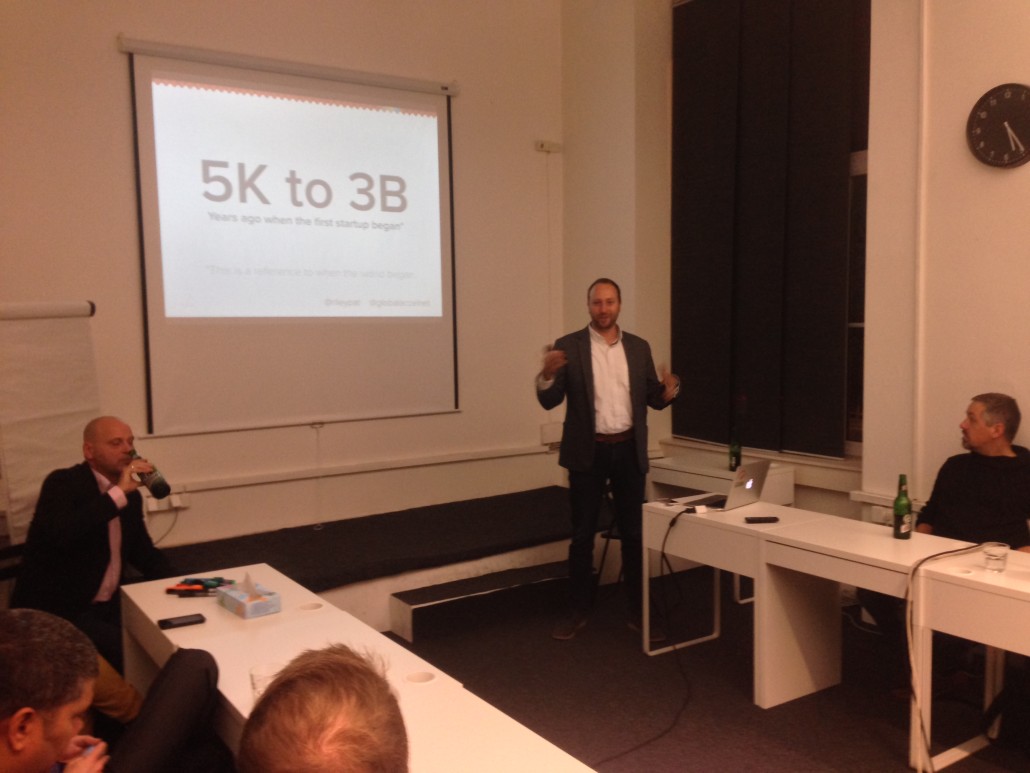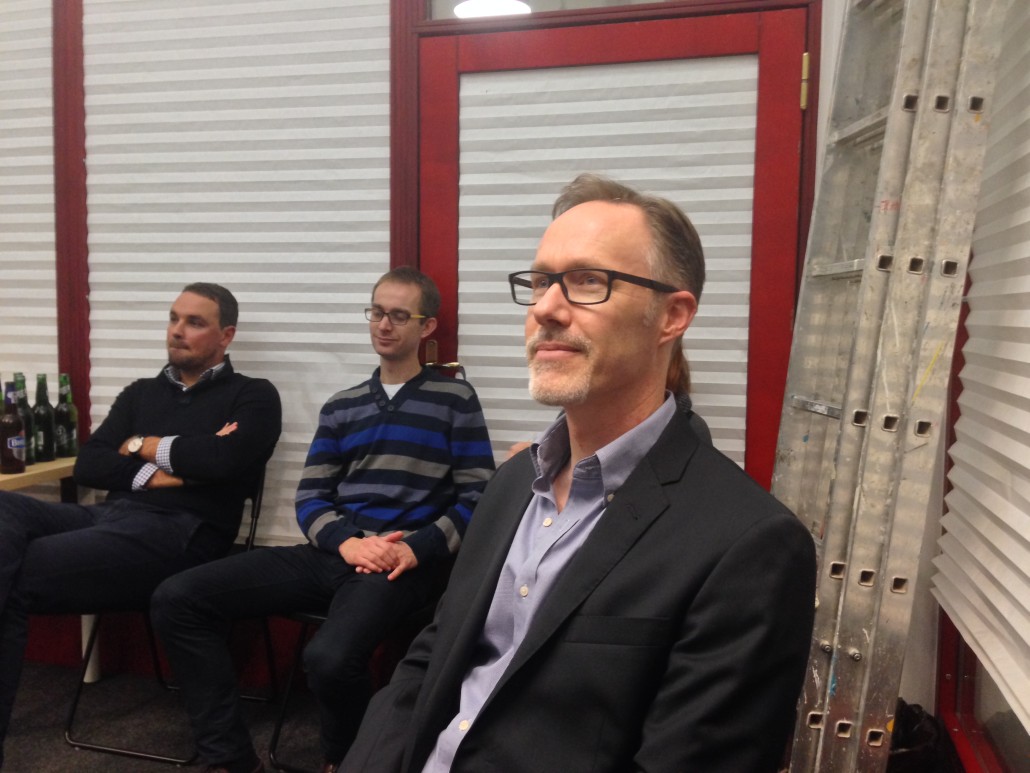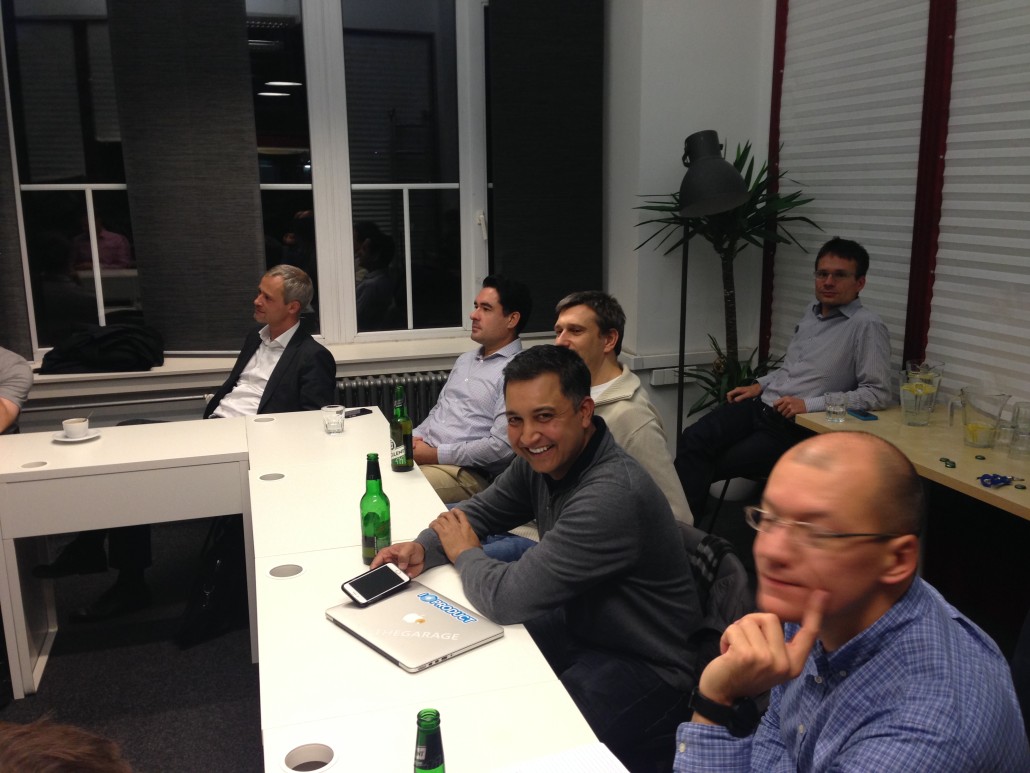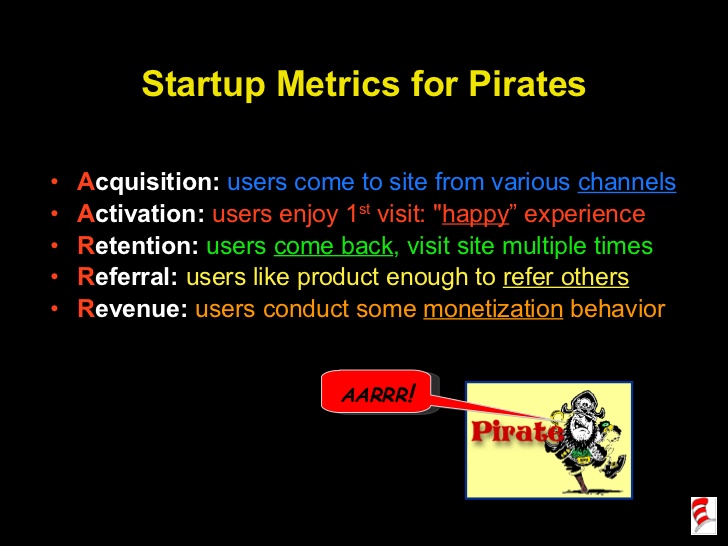With just 9 days left for Startups to apply to StartupYard 2016, we’re going to share a little secret with you.
One of the questions we often get from would-be applicants is: “what do you focus on in the application? What is going to make me stand out?” The answer is of course: “the team, and the problem you’re solving for customers.” That encompasses most of what we care about when looking at written applications to StartupYard.
Aside from that, we’re looking for your sense of awareness. Who are your real competitors? Where could you be in a few years time? What is the grand design?
And here comes the secret: virtually *any* idea with a technology component and a global market could pass the first 3 rounds of our 7 round application process. That’s not to say that getting into StartupYard is easy. We ultimately accept fewer than 3% of applicants to the program. But the vast majority of applicants never get past the first 3 rounds.
Failing at the Easy Stuff
The fact is that if you’re asking us what you need to do to get to an interview with StartupYard’s selection committee, you’re well on your way to getting the interview anyway. We look for people who don’t wait in line patiently. We look for people who ping us via email and come to meet us in person, and treat this process the way we hope they treat everything: as a challenge that can be hacked and optimized, and overcome through hard work and critical thinking.
As part of the pre-screening process for StartupYard 2016, we have already begun reviewing submitted applications. As always, this process is a scary one. We have to make big decisions based on a small amount of data. And that only gets worse when applicants don’t bring their A game to the application process.
Most startups who apply fail at the easiest part of the process. The application takes, conservatively, 2 hours to fill in. But we know that if a person can’t muster the energy to project ambition, focus, and passion through such a broad set of questions, then they aren’t likely to be the kind of founder we are looking for in the first place.
Still, we know that some people just never shine on paper. There have been plenty of applications that have left us very unsure in the past, only to turn out to be from startups who, once the lights were on and the Skype camera rolling, blew us away with their energy and focus.
The sad truth is that there are undoubtedly those who never make it that far, but who probably deserve to be heard.
4 Ways Applicants Fail Before they Start
There are a handful of common failure points for written applications. Here are the ones that will get yours trashed the fastest:
-
The Grocery list application
Many founders are engineers, and engineers think in peculiar ways. These applicants treat the application like a dumping ground for data, instead of a medium for communication.
So in response to, say, a question about traction, we’ll get a list of data points with no sense of what they are connected to: “50% growth in user acquisition via social media in first 3 months,”
That’s nice, I’m sure, but it doesn’t tell us much. How much did they spend? What was the original number? A narrative response is helpful for reminding yourself that you’re not talking to somebody who knows anything about you, your product, or its history.
Treat the application as you would an email to an investor. That’s pretty much what it is. Introduce the concept, talk us through the basics, and establish an argument and a narrative as you answer the questions, as to why we should accept your team. If it’s a list of numbers, they may make sense to you, but they won’t mean anything to us.
2. N/A
If we asked the question, assume it means something. Assume it’s important to us, if not to you. But many applicants leave questions blank, or answer “N/A.”
None of our questions are inapplicable. If we ask whether your team has worked together, and you haven’t, then that doesn’t mean the question doesn’t have an answer longer than “no.” How about: “We haven’t worked together, but we know each other because we had mutual friends in X industry, or at Y club or community event.” Tell a story about how you know each other. It isn’t hard.
One of the worst questions not to answer is about traction. We simply don’t take companies that have no traction. That’s because “traction,” is really about more than revenue, users, or sales. It’s about the company as a whole, changing and growing from one month to the next.
Tell us what you’re doing, even if you’re not adding users or making any sales yet. Every company has traction of some kind: “talked to 50 target customers,” or “developed prototypes,” or “raised 5,000 Euros from friends.” That’s all traction. “6 Months ago I had an idea, 3 months ago I found a co-founder, and now we have a business plan and are working on a prototype.” Great. Each of those things move a company forward, and are a kind of traction we want to hear about.
3. The Non-Answer Answer
One of the biggest red flags for us on an application is an inability to connect with the questions being asked.
And I would say the most common question to get a “non answer answer” is the question: “What problem are you solving?” Out of 10 applications, I would estimate that about 3 answer this question in a remotely straightforward manner.
This is of course not a problem with just startups. It’s human nature to answer questions according to what one thinks the questioner really wants to know. Often startups spend a lot of energy justifying their idea by talking about the market, because they think that’s more interesting to us.
But this tendency can cause people to avoid answering the question that is being asked, which is about what problem customers actually have, that you will solve. Many applications jump into a sales pitch which states every benefit their product offers, without addressing the basic problem it is solving.
What problem are you solving? “Well, we allow customers to something something 5 times faster and 3 times cheaper than something something, and we do it using the latest something, which is 30% more efficient and better for the environment than something something.”
Fantastic, but what is the problem? Is the problem that the competition isn’t fast enough? Not cheap enough? Not good enough for the environment? The problem you’re solving says everything about what kind of company you are, and who you want to sell your product to. Is it for people looking for something cheaper? People looking for something more powerful? People looking to save the environment?
A litany of benefits is not a coherent argument in favor of your product. Nor is the size of the market. Those benefits have to be worth it, to someone, to pay for. If not, no matter how big the market is, you won’t be a part of it.
Consider the Consumer
Just consider yourself and your own behavior as a consumer. Do you use Uber, or DropBox, or Google? I’ll assume you use at least one of those services.
Now, some reading this may not remember the first time they used Google, because it’s been a part of the internet since they can remember. But I do remember my first time using it, in the 11th grade. It was just after 9/11, 2001, and I was looking at Yahoo news articles, trying to find information about the terrorist attacks.
“What happened to that 3rd plane they were talking about on the news?” I asked a friend on AIM (this was before the days of Skype). “I can’t find anything on Yahoo.” All my searches were returning bad results. It’s hard to remember now that a search engine couldn’t always be counted on to read your mind. “Google it.” “Huh?” “Google it, with Google, it’s the best way to search stuff like that.”
And so I, like a few billion other people, typed in www.google.com, and 14 years later, I do more or less the same thing every day.
Consumers react to problems, and only then do they search for features. My problem, on that day in 2001, was that I didn’t have information I wanted, and I didn’t have an easy way to get it. Google solved that problem.
With every product you use, there is an initial reason you started using it. Even if it was a direct competitor for something you were already using, it did something the competition did not do, and you needed. I switched from Yahoo 14 years ago because it wasn’t allowing me to do one thing I wanted. Yahoo had many features that Google didn’t, in those days. But Google could do what I needed, and Yahoo couldn’t.
We are looking for that one thing that you offer, that makes you Google in 2001- the thing that makes someone who uses your product say: “oh, use this, it’s the best for that particular problem.”
Your problem doesn’t have to be a new one either. Google’s wasn’t solving a problem people didn’t know about. Neither is Uber, or DropBox, or many other hyper growth startups. It was just that the competitors weren’t doing a good enough job. There was room for a new solution.
4. Misidentifying the Competition
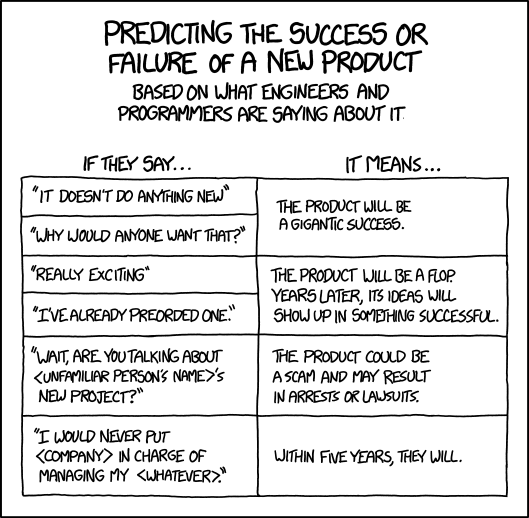
XKCD’s Take on engineers and “new products.”
And this leads to the our last great failing. Ignoring or misidentifying the real competition.
I say, the “real competition,” because defining your competition as a startup is a very tricky business. Broadly, your competition should be whatever your target user currently does to solve the problem that your product is built to solve. That’s true as far as it goes.
But where many startups get into trouble is by picking companies that “look like” their own, and calling that the competition. That’s not wrong, per se, but it isn’t very insightful or helpful. It leads to a lot of applications where the competition listed is a handful of companies most people have never heard of, including us.
Think about that: if your competitors aren’t expanding globally, is that a good argument that there is a strong market for your products?
And by picking competitors that are very similar to yourself, you undermine your ability to define yourself in a broader market. You are not really competing for the small number of users that these smaller direct competitors already have, after all. You ultimately want people who have never used any product in your category to start using yours.
If you’re a car company, you want to sell people their first car. You don’t want to spend your time convincing people to give up somebody else’s car, which is perfectly fine for them, and switch to yours. The arguments in favor of owning a car vs. not owning one are easier to win than an argument over which of 2 very similar cars a person should own, particular when they already own one of them.
When I’m working with startups on product positioning, I often use the example of Uber. Who are Uber’s competitors? The answer is more complex than you think. If Uber thought its competitors were other taxi companies, or other ride-hailing apps, then this would affect its behavior in specific ways. It would try to do just what taxi companies do, only somehow better. Or it would try to do what other ride-hailing apps do, only faster and cheaper. It would be competing for people it knows are in that market.
But Uber’s success has been tied to the fact that it doesn’t hold itself to these lowly ambitions. It wants to compete for much bigger markets- to replace a whole range of consumer behaviors. Uber wants to be an alternative to owning a car, to renting a car, to hailing a taxi or to taking a bus. It want’s to be an alternative to drivers for working for a taxi company, or even having a summer job. It wants to be an alternative to ordering take-out food, or picking your mom up at the airport. It wants to replace many common behaviors at once- not just one or two.
Would Uber say their main competitors are taxi companies? Or is their main competition found in modern car culture itself? Which market is ultimately the more promising one?
So expand your horizons, and pick competitors according to the customers you want; not the customers that you know are already in the market. It is perfectly fine to aim high. We don’t laugh at companies who name big competitors. Big competitors have many vulnerabilities, and the bigger they get, the harder it is for them to keep growing and changing.
Give us Your Big Vision
The real shame is how often we talk to a startup in person, and find out how much better they are than they look on paper. “I didn’t want to tell you the big vision yet, because it’s in the future.” We hear that surprisingly frequently. But why? Tell us your big vision; share your wild ambitions. That’s why we’re in this business!
Your big vision demonstrates your passion and the scope of your thinking, and you shouldn’t be afraid that it will make you seem ridiculous. To some, it will. But there is no highly successful startup that wasn’t laughed out of at least a few rooms before they struck gold. If people don’t buy your big vision, then keep working on it. If you work hard enough on it, it will eventually be realistic, and maybe even achievable.


